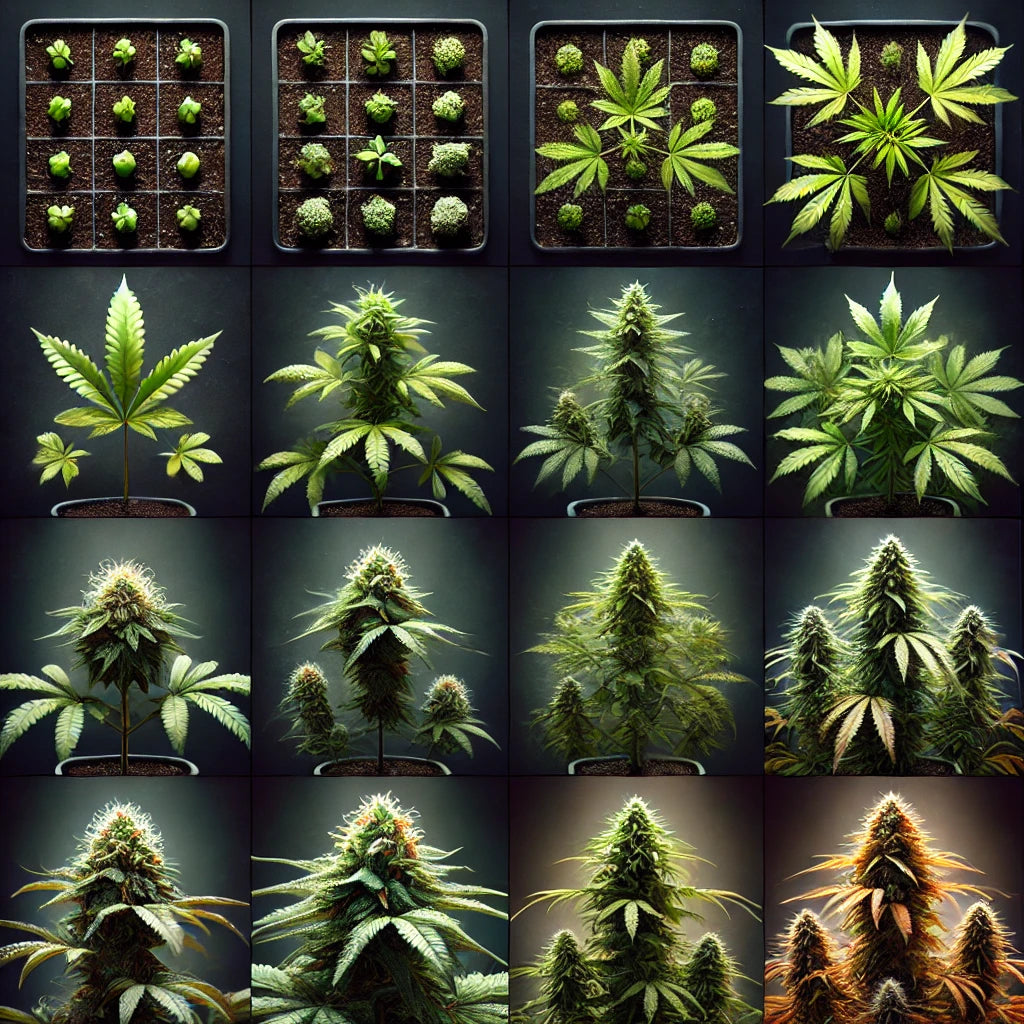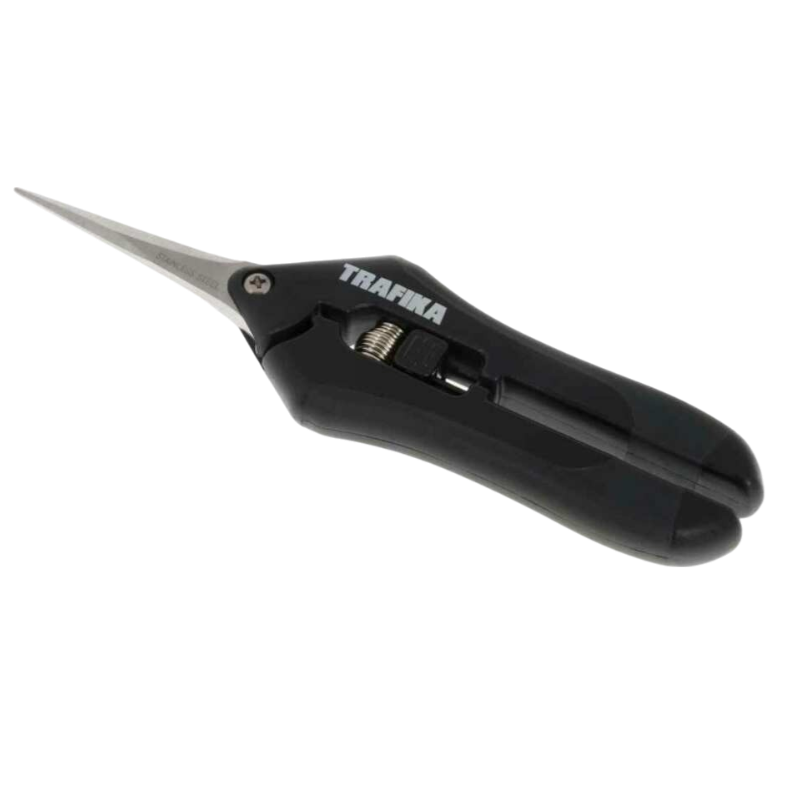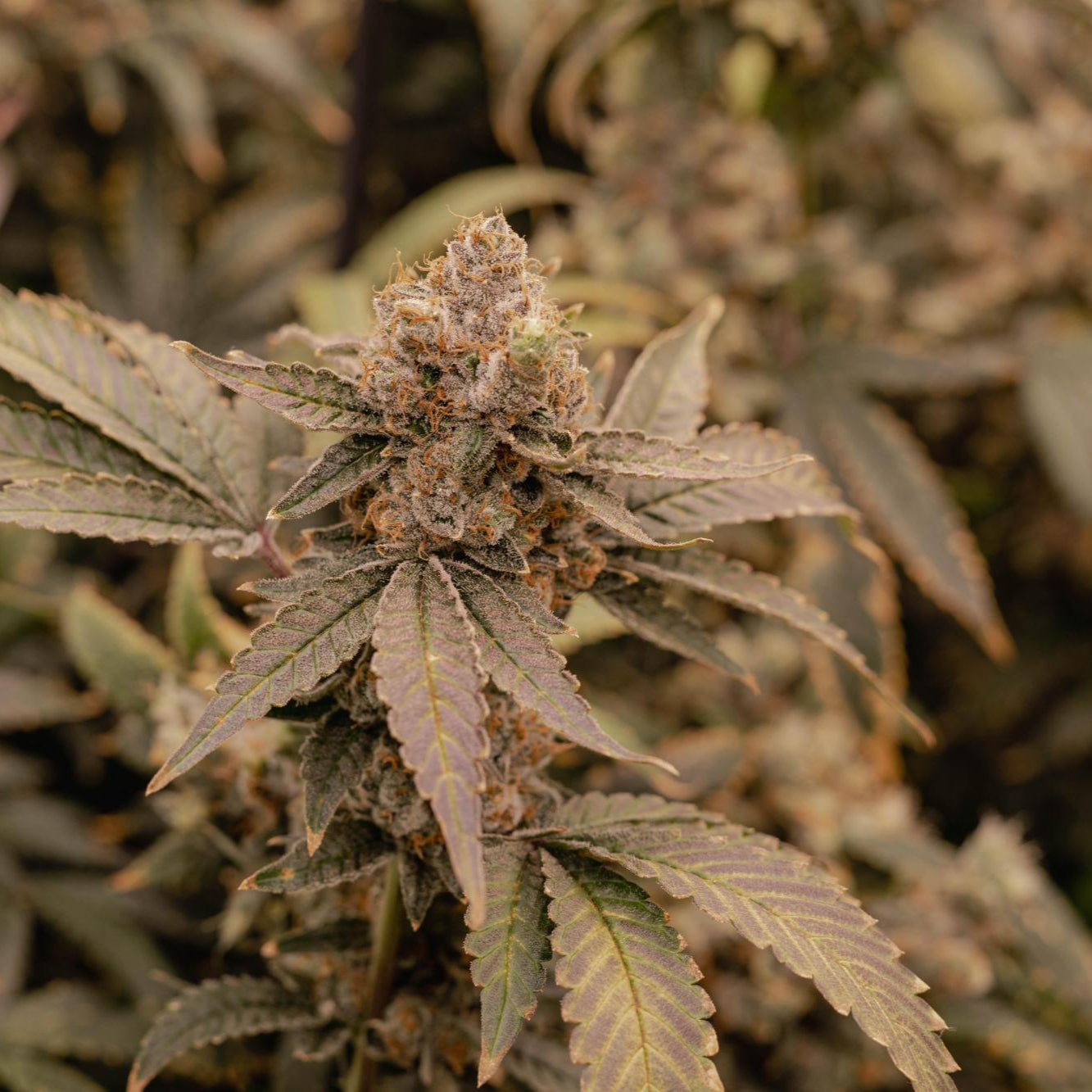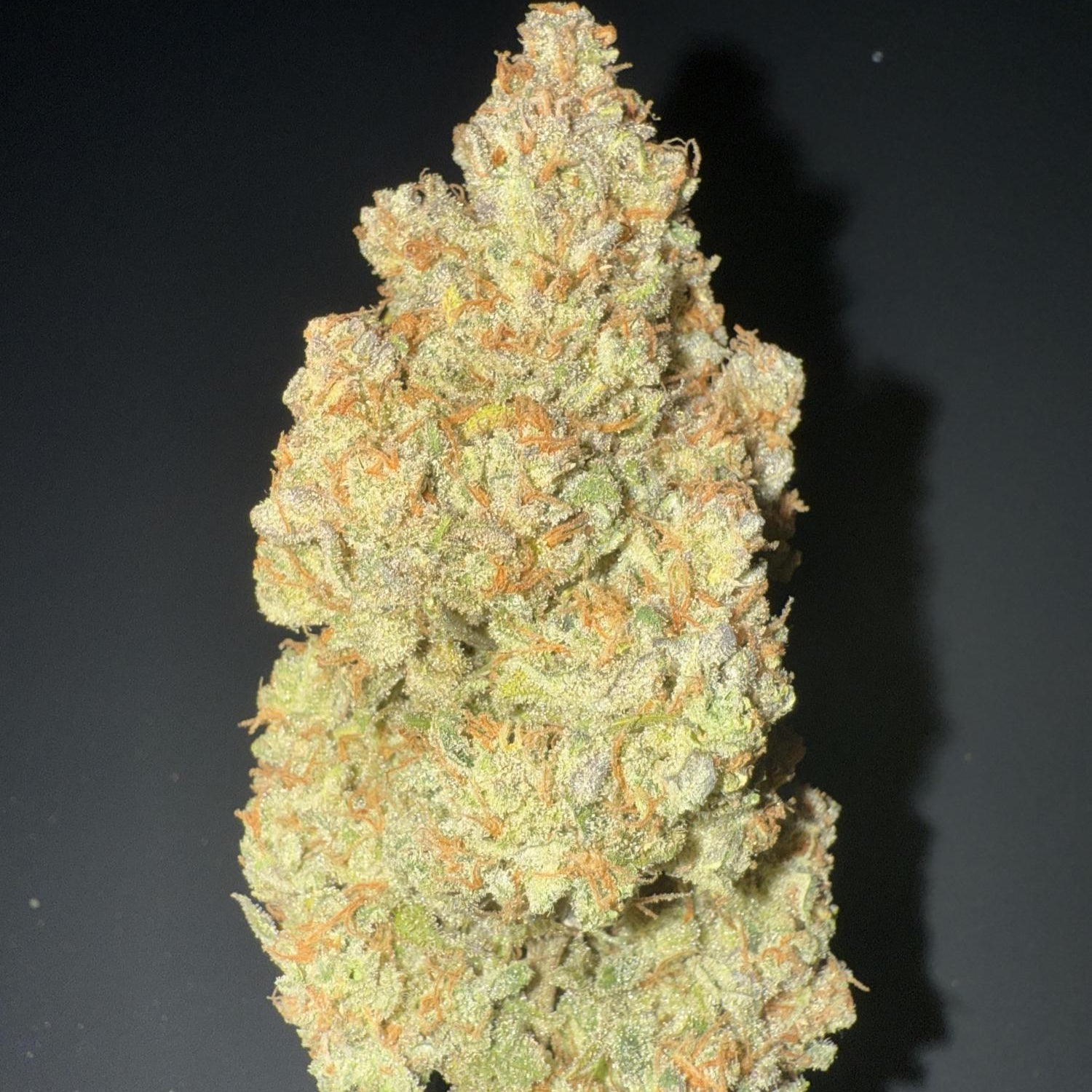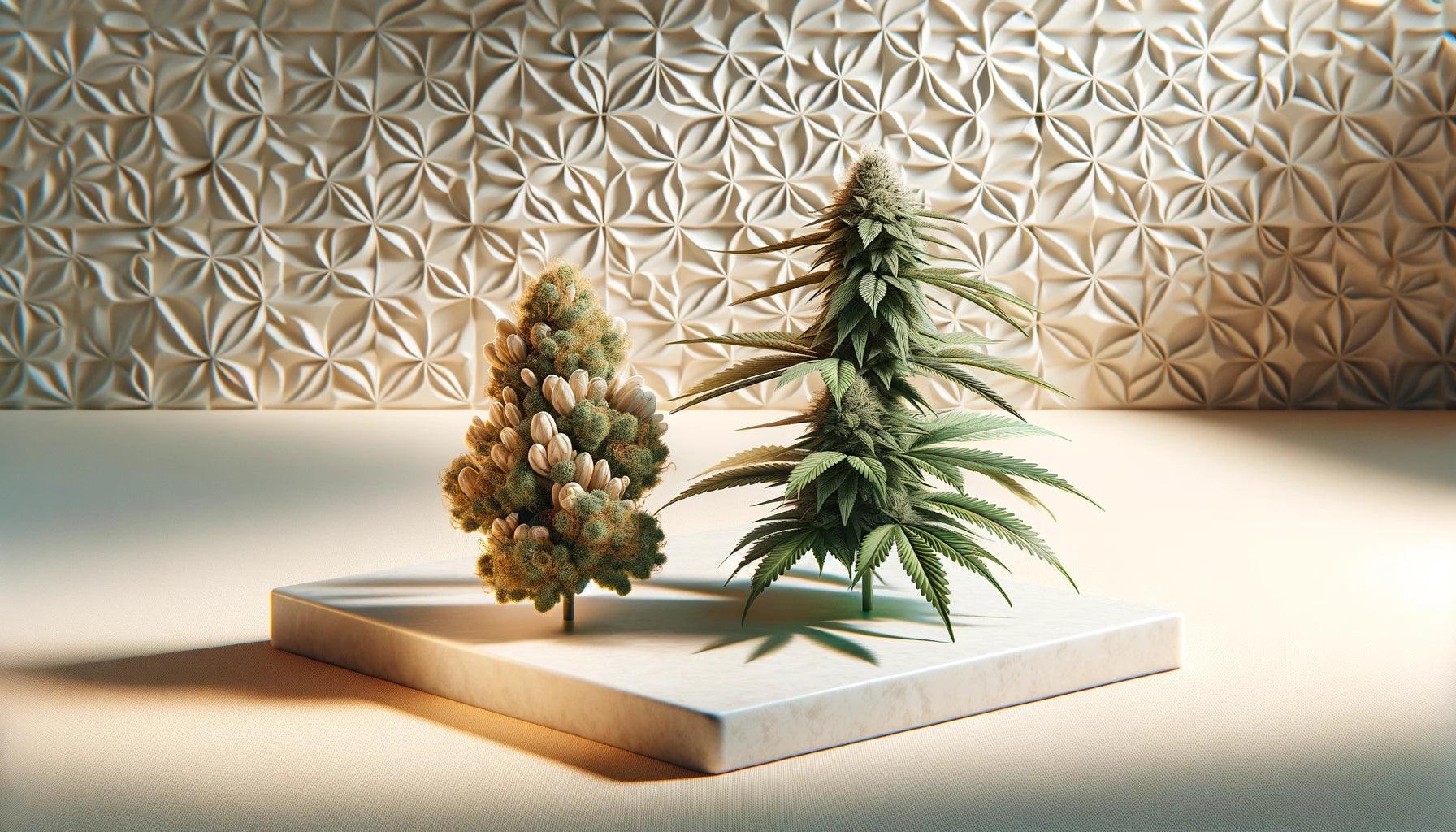
Detect Cannabis Gender
Trends of the week

2. Signs and characteristics of male plants
Identifying male cannabis plants is a crucial step in the cultivation process, as male plants do not produce high-quality flowers and instead produce pollen that can pollinate female plants. This leads to seed formation and reduces the quality and yield of the crop. It is therefore important to identify and remove male plants early.
Early detection of male plants
Male plants usually show their sexual characteristics a little earlier than female plants, often in the pre-flowering phase, about 3-6 weeks after germination. Here are the main signs to look out for:
- Pollen sacs:The first signs of the male sex are small, round pollen sacs that appear at the nodes of the plant. These sacs look like tiny balls and will later release pollen.
- No pistils:Unlike female plants, male plants do not have pistils. If you do not see fine, white hairs on the nodes, it could be a male plant.
Typical characteristics of male flowers
As the pre-flowering phase progresses, the pollen sacs continue to develop and become more visible. Here are the characteristic features of male flowers:
- Larger pollen sacs:The pollen sacs become larger and develop in clusters. They often hang in grape-like structures at the nodes.
- Absence of calyxes:Male plants do not develop calyxes, which surround the pistils in female plants.
- Opened pollen sacs:When the pollen sacs are ripe, they open and release yellow pollen that can easily become airborne.
Removal of male plants
Since male plants do not produce quality flowers and should prevent pollination of the female plants, it is important to remove them as early as possible. Here are some tips for safely removing male plants:
- Careful inspection:Check all plants regularly, especially during the pre-flowering phase, for signs of male characteristics.
- Gentle removal:Remove the male plants carefully so as not to damage pollen sacs and spread pollen.
- Disposal:Dispose of male plants far away from your growing area to avoid accidental pollination.
For further details on the safe removal and disposal of male plants, see the chapterDealing with male plants.
Influence of the environment on male plants
Environmental conditions can affect the sex of cannabis plants. Factors such as temperature, light cycles and stress can contribute to the development of more male plants. It is important to create optimal growing conditions to minimize the occurrence of male plants:
- Temperature control:Keep temperatures stable and avoid extreme heat or cold.
- Constant light cycles:Use consistent light cycles, especially during the pre-flowering phase, to avoid stress.
- Stress reduction:Avoid overwatering, nutrient deficiencies and physical damage that could stress the plants.
For more information on the role of environmental conditions, see the chapterInfluence of the environment on gender.
By recognizing the characteristics and signs of male plants, you can take early action to maximize the quality and yield of your harvest. Use the other chapters of our grow guide to get detailed instructions and tips.
3. Signs and characteristics of female plants
Female cannabis plants are the most important plants to grow as they produce the coveted flowers that are rich in cannabinoids like THC and CBD. Identifying female plants is crucial to ensuring your harvest is high quality and productive. Here are the key signs and characteristics to look out for.
Early detection of female plants
Female plants usually show their sexual characteristics in the pre-flowering phase, about 3-6 weeks after germination. Early identification allows you to remove male plants in time and prevent pollination. Here are the signs to look out for:
- Pistils (stigmas):The first signs of the female sex are fine, white hairs (stigmas) that appear at the nodes of the plant. These hairs grow from the calyxes and are clearly visible.
- Calyxes:Female plants develop small, teardrop-shaped calyxes at the nodes. These calyxes surround the stigmas and are a clear indication of the female sex.
Typical characteristics of female flowers
As the pre-flowering phase progresses, the female flowers continue to develop and become more clearly visible. Here are the characteristic features of female flowers:
- Dense calyxes:The calyxes grow closer together and form clusters, which later grow into the typical cannabis flowers (buds).
- Trichomes:Female flowers develop trichomes, tiny, crystal-like structures that contain resin and cannabinoids. These trichomes give the flowers their glittery appearance.
- Aroma:Female flowers begin to develop a strong, distinctive aroma that depends on the strain and is due to the production of terpenes.
Examples of female flower structures
Care and promotion of female plants
To ensure your female plants reach their full potential, careful care is essential. Here are some tips for caring for and promoting female plants:
- Optimal lighting:Make sure your plants get enough light, especially during the flowering phase. High-quality LED or HID lights are ideal for indoor growing.
- Nutrient:Use special flowering fertilizers that are rich in phosphorus and potassium to encourage flowering.
- Irrigation:Make sure your plants are watered evenly without letting the roots sit in water. Too much or too little water can affect the health of the plants.
- Air circulation:Ensure good air circulation in your grow room to avoid mold and pest infestation.
You can find further tips on caring for your plants in the chapterCare and promotion of cannabis plants.
Influence of the environment on female plants
Environmental conditions play a crucial role in the development and health of female cannabis plants. Here are some factors to consider:
- Temperature:Keep the temperature at around 20-26°C during the flowering phase. Extreme temperatures can negatively affect flower formation.
- Humidity:Keep the humidity at 40-50% during the flowering phase to prevent mold growth and promote resin production.
- Light cycles:Use a consistent light cycle of 12 hours light and 12 hours dark during the flowering phase to maximize flower production.
For more information on the role of environmental conditions, see the chapterEnvironmental conditions for cannabis cultivation.
By recognizing the characteristics and signs of female plants and taking optimal care of them, you can maximize the quality and yield of your harvest. Use the other chapters of our grow guide to get detailed instructions and tips.
4. Signs and characteristics of hermaphrodite plants
Hermaphrodites are plants that have both male and female sexual characteristics. These plants can develop both calyxes and pollen sacs, which can cause them to self-pollinate and reduce the quality of the harvest. It is therefore important to identify hermaphroditic plants early and take appropriate measures.
What are hermaphrodite plants?
Hermaphrodite plants have the ability to produce both female flowers (with stigmas) and male pollen sacs. This often happens in response to stress factors or genetic abnormalities. Hermaphroditism can occur in two forms:
- True hermaphrodites:These plants develop female flowers and male pollen sacs simultaneously on the same plant.
- Intersex:These plants begin as female plants and later develop male pollen sacs, often in the calyxes or at the nodes.
Identifying and dealing with hermaphrodite plants
Early detection of hermaphroditism is crucial to prevent self-pollination and the resulting seed production. Here are the key signs and characteristics of hermaphrodite plants:
- Pollen sacs in female flowers:Watch for small, banana-shaped pollen sacs (often called "nanners") that appear in the calyxes or at the nodes. These can open without warning and release pollen.
- Combination of stigmas and pollen sacs:If you see both white stigmas and pollen sacs on the same plant, it is a hermaphrodite plant.
- Unusual flower structures:Look for flowers that do not have the typical structure of pure female flowers. This may be an indication of hermaphroditism.
Examples of hermaphrodite flower structures
Dealing with hermaphrodite plants
If you discover hermaphrodite plants in your growing area, it is important to act quickly to prevent pollination. Here are some steps you should take:
- Early removal:Remove hermaphrodite plants immediately to minimize the risk of self-pollination and pollination of other plants.
- Careful inspection:Check all plants regularly for signs of hermaphroditism, especially during the flowering phase.
- Stress reduction:Minimize stress factors such as extreme temperatures, irregular light cycles, and nutrient deficiencies that can contribute to the development of hermaphroditism.
You can find further tips on dealing with hermaphrodite plants in the chapterAvoid and treat hermaphrodite plants.
Influence of the environment on the development of hermaphrodite plants
Environmental factors play an important role in the development of hermaphroditism. Here are some factors you should consider to minimize the risk:
- Stable temperatures:Keep the temperatures in your grow room stable and avoid extreme fluctuations.
- Consistent light cycles:Make sure the light cycles are consistent and there are no sudden changes.
- Avoid stress:Reduce stress factors such as overwatering, nutrient deficiencies and physical damage that can stress plants and lead to the development of hermaphroditism.
For more information on the role of environmental conditions, see the chapterInfluence of the environment on gender.
By recognizing the characteristics and signs of hermaphrodite plants and responding appropriately, you can maximize the quality and yield of your harvest. Use the other chapters of our grow guide to get detailed instructions and tips.
5. Methods for sex determination
Sexing cannabis plants is a crucial step in the growing process. There are several methods to determine the sex of your plants early on and ensure you harvest quality buds from female plants. Here are the most common sexing methods.
Visual inspection
Visual inspection is the most commonly used method for sex determination. This method requires experience and a keen eye to detect the early signs of gender. Here are the steps for visual inspection:
- Pre-flowering phase:Inspect plants during the pre-flowering phase, about 3-6 weeks after germination, for signs of pollen sacs (male) or pistils (female).
- Pollen sacs:Male plants develop small, round pollen sacs at the nodes. These look like tiny balls and will later release pollen.
- Pistil:Female plants have fine, white hairs (stigmas) growing from the calyxes. These hairs are a sure sign of female plants.
DNA testing and other scientific methods
Modern scientific methods offer precise and early sex determination through DNA testing. These methods are particularly useful for professional growers and breeders.
- DNA tests:These tests analyze a small sample of the plant, usually a leaf, to determine sex using genetic markers. DNA tests are very accurate and can determine sex in the early stages of growth.
- Laboratory tests:Some specialized laboratories offer comprehensive analyses that, in addition to sex determination, also provide information on THC and CBD content and other important plant characteristics.
For more information about DNA testing, see the chapterDNA tests for gender determination.
Comparison of methods for sex determination
Optimal times for sex determination
The timing of sexing is crucial to remove unwanted male plants early and ensure the quality of your harvest. Here are the optimal times for sexing:
- Pre-flowering phase:The first signs of gender usually appear 3-6 weeks after germination. At this point, you can visually inspect the plants or have DNA tests done.
- Flowering phase:During the early flowering phase (about 1-2 weeks after the 12-hour light cycle is initiated), the sexual characteristics are more clearly visible. This is a good time to re-inspect to make sure no male plants have been missed.
Influence of growth conditions on sex determination
Growing conditions can affect sex determination. Optimal conditions promote plant health and make sex identification easier:
- Stable temperatures:Keep temperatures stable during the growing and flowering phases to avoid stress.
- Constant light cycles:Use consistent light cycles, especially during the pre-flowering and flowering phases, to avoid stressing the plants.
- Stress reduction:Avoid factors that can cause stress, such as overwatering, nutrient deficiencies, or physical damage. Stressed plants are more likely to become hermaphroditic.
For more information on the role of growth conditions, see the chapterGrowing conditions for cannabis plants.
By knowing and applying the different sexing methods, you can maximize the quality and yield of your cannabis crop. Use the other chapters of our grow guide to get detailed instructions and tips.
Blog posts

Terpene verstehen: Wie Aromen und Geschmacksstoffe das THC-Dampferlebnis beeinflussen
Hast du schon einmal an einem frischen Zweig Rosmarin gerochen? Der würzige Duft hat doch sicher auch bei dir sofort bestimmte Assoziationen ausgelöst, vielleicht an ein mediterranes Gericht oder e...

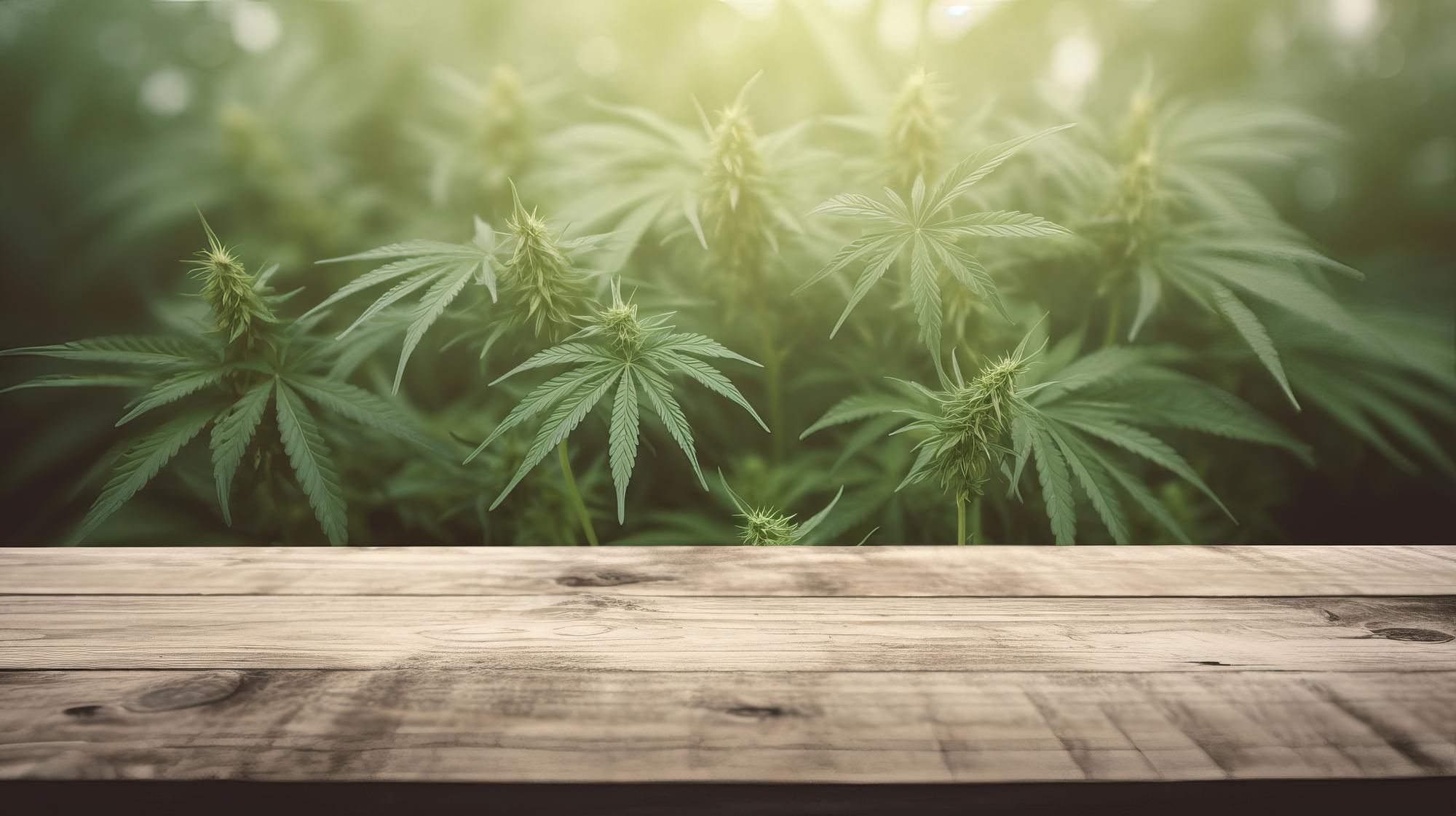
Discover how to purchase cannabis safely and responsibly in a regulated market. Learn more about the variety of products, quality standards and the legal purchase of cannabis.
Best quality
The products offered are subject to the highest quality standards and regular controls. Through direct contact with our dealers, we can offer you the best prices for your CBD products.
Certified dealers
We only work with professional and verified dealers. The products are subject to the highest quality requirements and are produced according to EU standards.
100% legal
Tell your customers about your payment methods.
Our partners






